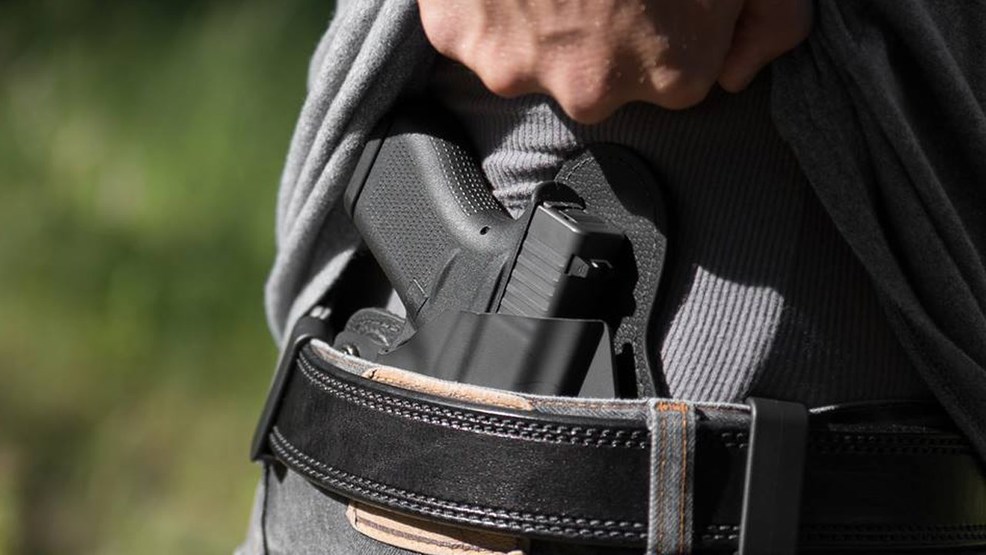This is the second in a multi-part series on CGF’s Silvester v. Harris federal Second Amendment lawsuit, an action that challenges the 10-day waiting period laws (“WPL”) as unconstitutional (as applied).
Background for clarity: Amicus curiae (plural: amici) is Latin for “friend of the court.” As explained by the Cornell University Law School Legal Information Institute, “Frequently, a person or group who is not a party to a lawsuit, but has a strong interest in the matter, will petition the court for permission to submit a brief in the action with the intent of influencing the court’s decision.” This article explores the amici in support of (ISO) Defendant/Appellant Attorney General Kamala Harris.
BRADY, EVERYTOWN, AND THE ARTIST FORMERLY KNOWN AS LCAV
Following Harris’ opening brief, three amici — the Brady Center to Prevent Gun Violence, Everytown for Gun Safety, and the Law Center To Prevent Gun Violence — each filed briefs in support of Harris and reversal of the District Court’s decision that found California’s 10-day waiting period laws (WPL) unconstitutional as applied to three classes of people. (If you’re needing to catch up on what happened in the case and why, visit our Silvester v. Harris case web page.)
Covering all three briefs is relatively simple, because all three briefs largely make the same arguments:
- The WPL are “longstanding” and therefore presumptively lawful;
- The WPL regulate the “commercial sale of arms” and are therefore presumptively lawful;
- Even if the WPL were not presumptively lawful, they relate to an “important government interest” – public safety – and therefore survive intermediate scrutiny.
WPL ARE “LONGSTANDING”
The first argument all three briefs make comes from a much-debated footnote in the Supreme Court’s 2008 D.C. v. Heller decision:
Like most rights, the Second Amendment right is not unlimited. . . . [N]othing in our opinion should be taken to cast doubt on longstanding prohibitions on the possession of firearms by felons and the mentally ill, or laws forbidding the carrying of firearms in sensitive places such as schools and government buildings, or laws imposing conditions and qualifications on the commercial sale of arms.
Heller, 128 S.Ct. 2783 (2008) at 2816-2817.
This single passage is the crux of most Second Amendment legal debate today. The courts are still actively wrestling with the question of how to determine what gun laws are “presumptively lawful” and what laws are unconstitutional infringements. While we would say the answer is obvious – what part of “shall not be infringed” is unclear? – the reality of Second Amendment litigation is that we have to face arguments that turn on various “dicta” in Heller.
LCPGV and Everytown argue in various ways that the WPL should be considered “longstanding” and presumptively lawful. (Interestingly, the Brady Center splits from the pack on this issue, arguing that only “prohibitions on the possession of firearms by felons and the mentally ill” are required to be “longstanding.”)
Everytown argues:
[A] dozen states enacted waiting periods in the 1920s and 30s consistent with the Uniform Law Commission’s model legislation, and Congress enacted a waiting period for the District of Columbia. . . . [E]ven the NRA advocated their adoption for the first three-quarters of the 20th century. . . .Given this “historical prevalence,” California’s law is a “longstanding” regulation under Heller.
LCPGV goes further, arguing that the Third Circuit’s analysis should be used, requiring only that a regulation “(1) have existed in some form for a significant period of time, either in a diverse number of jurisdictions or over a significant portion of the population; and (2) be consistent with the traditional regulation of firearms” to be considered “longstanding:”
Waiting period laws like those in effect in California have been enacted in ten states . . . Moreover, waiting period laws also apply to approximately one-third of the national population as of the 2010 census . . . The widespread passage of waiting period laws over the last century demonstrates that these laws have been generally accepted in a wide array of jurisdictions over a significant period of time and therefore should be considered “longstanding.”
Under this view, unusually-strict gun control laws passed by a minority of states within the past 80 or so years masquerade as “longstanding” and “presumptively lawful” instead of the uncommon and unconstitutional infringements that they are.
THE WPL REGULATE THE COMMERCIAL SALE OF ARMS
The next argument is vitally important. Under these groups’ views, any law “imposing conditions and qualifications on the commercial sale of arms” is a “presumptively lawful” regulation under the dicta of Heller. This category, generally understood to refer to rules governing licensing of FFLs or transfers of firearms, is twisted by the amici to cover any law relating to the sale of firearms. Under their argument, even a complete ban on the sale of handguns would apparently be “presumptively lawful” so long as private possession were not banned.
As the Brady Campaign so simply puts it:
[S]ince the Waiting Period is a “presumptively lawful” condition on commercial sales of firearms, it should be upheld without further scrutiny of any type.
THE “2A TWO-STEP”
Finally, we come to a recurring argument of gun prohibitionists that is so prevalent in litigation, Second Amendment advocates call it the “2A Two-Step” or “post-Heller Two-Step.” In this perverse interpretation of the Second Amendment, they first argue that, since the “core” of the Second Amendment is the right to keep and bear arms for self-defense within the home, any law that does not directly destroy the ability of a person to defend themselves within their own home is reviewed under the lesser of the forms of heightened judicial review, “intermediate scrutiny.”
“Scrutiny” levels are a legal concept that is beyond the scope of this article, but generally speaking, in order for a law to pass intermediate scrutiny, “the challenged law must further an important government interest by means that are substantially related to that interest.” Notably, intermediate scrutiny generally requires a showing (evidence) going to the law’s tailoring and fit with the stated interest.
However, under the “post-Heller Two-Step,” the government first argues that “public safety” (or, sometimes more explicitly, “reducing gun violence”) is a “substantial interest” of the government. From there, it argues that any law they claim to further public safety is a “good enough” fit with the interest (nevermind evidence), and is therefore constitutional. (For more on the Two-Step, read this brief to the Supreme Court.)
Under this improper application of “intermediate scrutiny,” any gun control law short of a total ban on the possession of firearms in homes by law-abiding people would be constitutional…because the government says it is.
CONCLUSION
Interestingly enough, the amici in this case are more interested in the procedural discussions of how to evaluate the constitutionality of gun control laws than they are with the actual waiting period laws. Unlike Harris, who spent a large portion of her opening brief arguing about the hypothetical evils she thinks will occur if the Ninth Circuit upholds the District Court’s decision holding WPL unconstitutional, the amici in support of Harris spend the majority of their arguments discussing scrutiny standards and the definitions of terms. It’s almost like they think the Second Amendment is a second-class right…
Thanks for following our series on Silvester v. Harris. Things get exciting in Part III, where the Plaintiffs/Appellees fire back!
Part I: The Silvester v. Harris (10-Day Waiting Period Case) Appeal – Part I: The State’s Opening Brief



